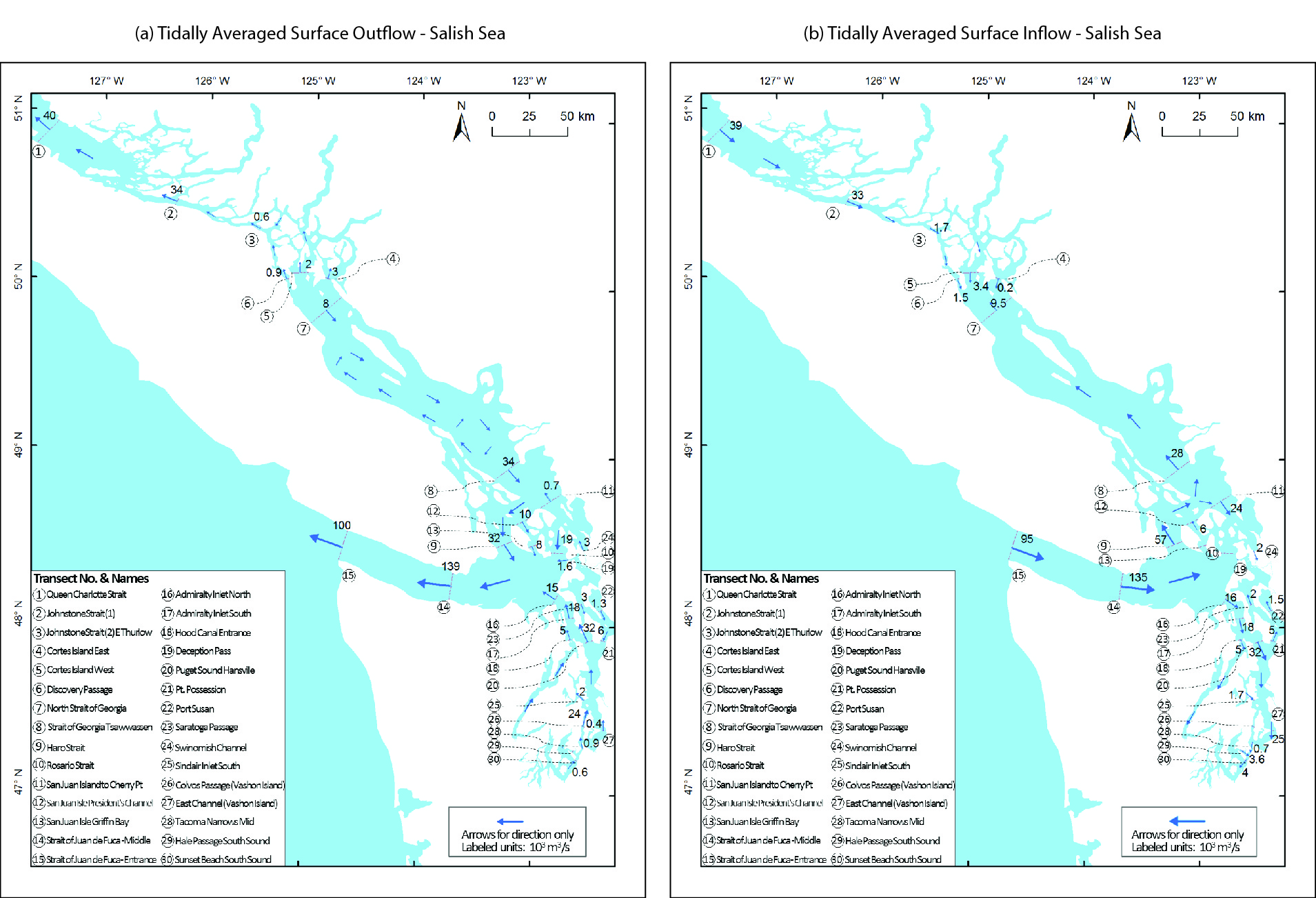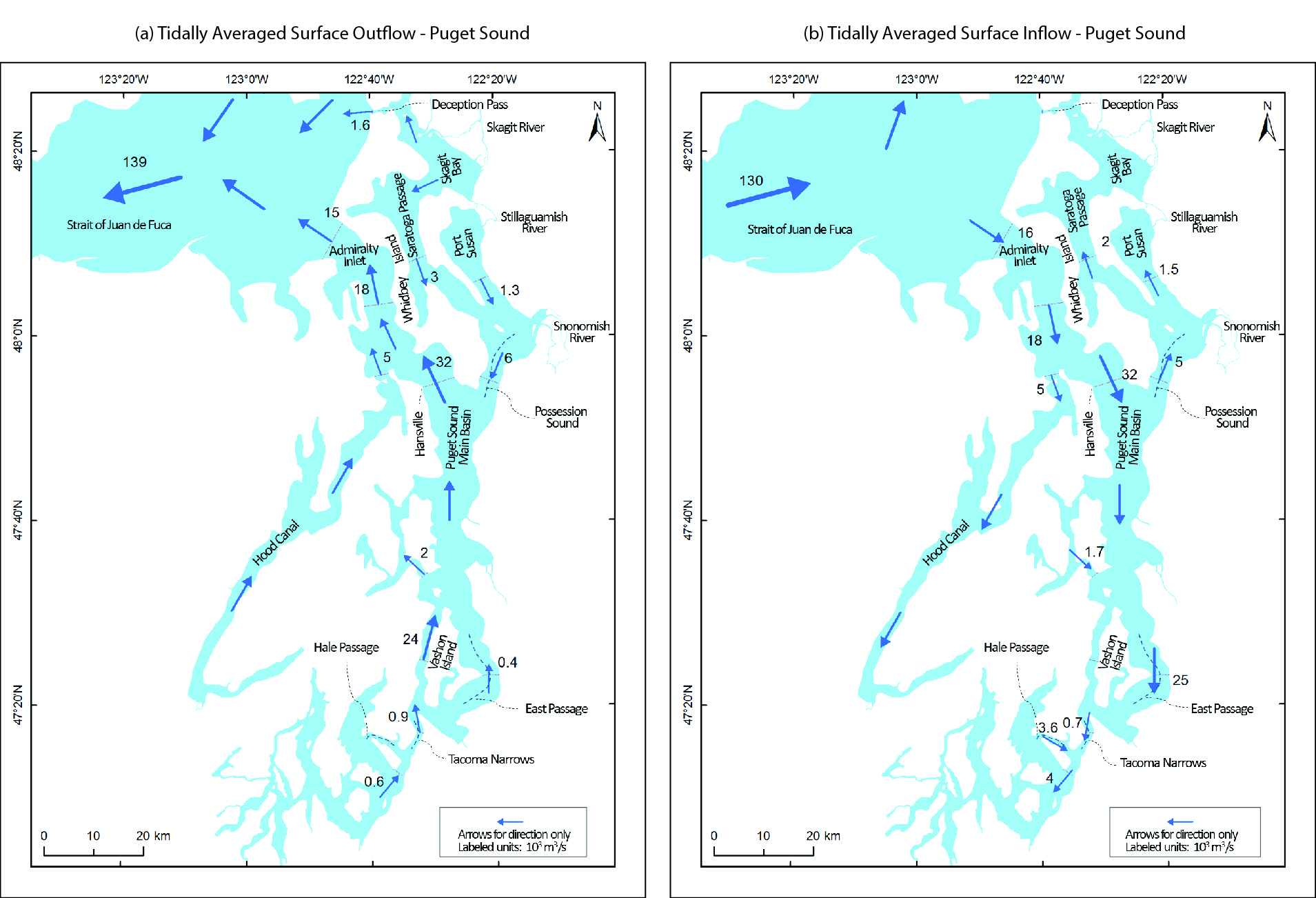Circulation Maps
The two-layer circulation and transport through the multiple interconnected sub-basins within Salish Sea is illustrated through schematic maps with quantitative estimates of exchange flows at various cross sections.
A computational technique was developed to allow summation of volume fluxes across arbitrary transects through unstructured finite volume cells. Using this method, tidally averaged volume fluxes were computed at multiple transects. The results were used to validate the classic model of Circulation in Embracing Sills (Ebbesmeyer and Barnes 1980) for Puget Sound and also to provide quantitative estimates of the lateral distribution of tidally averaged transport through the system. Sensitivity tests with and without exchanges through Johnstone Strait demonstrate that it is a pathway for outflow of Georgia Basin runoff and Fraser River water from the Salish Sea and for inflow of Pacific Ocean from the north (Khangaonkar et al. 2017a).



